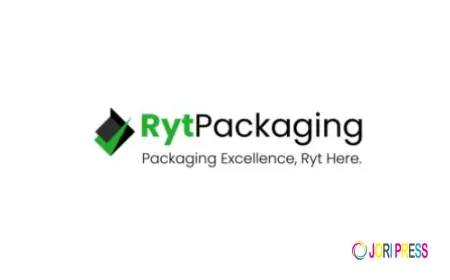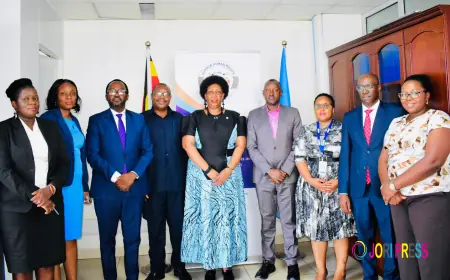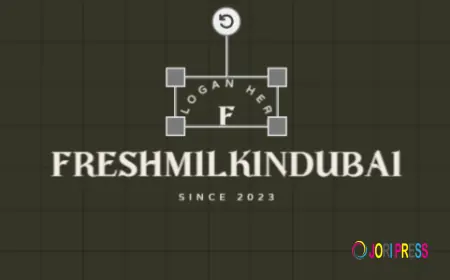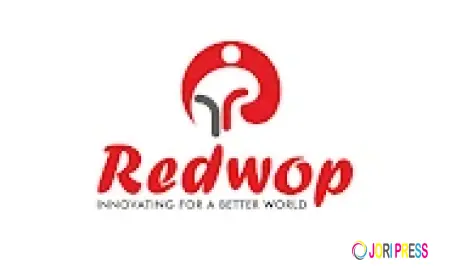Egypt Textiles Market Trends and Developments: A 2030 Perspective on 4.25% CAGR Growth
Egypt Textiles Market Trends and Developments: A 2030 Perspective on 4.25% CAGR Growth
Egypt Textiles Market: Growth Analysis, Trends, and Forecast to 2030
The Egypt Textiles Market is a critical component of the country’s industrial framework, representing a key segment of its manufacturing sector. Valued at USD 3.87 Billion in 2024, the market is expected to grow with a CAGR of 4.25% through 2030. Egypt has long been recognized globally for its high-quality cotton and textile production capabilities. This recognition is backed by a skilled workforce, well-established infrastructure, and strategic geographic positioning, which facilitates both domestic distribution and international exports. The textile sector in Egypt contributes significantly to the country’s GDP, employment, and foreign exchange earnings, making it an essential area for investment and development.
The market’s growth is further supported by government initiatives aimed at modernization, export promotion, and technology adoption. Programs like the “Made in Egypt” campaign emphasize the country’s capacity to produce premium-quality textiles that can compete on a global scale. Additionally, Egypt’s textile manufacturers are increasingly adopting sustainable practices and modern production techniques, enhancing both quality and market appeal in international markets.
???????? ??? ?????? ??????:-
https://www.techsciresearch.com/sample-report.aspx?cid=15351
Market Dynamics and Drivers
The Egypt Textiles Market is driven by multiple factors, starting with the availability of high-grade Egyptian cotton. Known for its long staple length, superior softness, and durability, Egyptian cotton is a preferred choice for high-end apparel and luxury textiles worldwide. Domestic demand for textiles is also rising due to factors such as urbanization, increasing disposable incomes, and changing lifestyles. Household textile products, apparel, and fashion accessories are experiencing consistent growth, reflecting the evolving consumer preferences in Egypt.
The global demand for textile products provides a strong export opportunity. Egyptian manufacturers have capitalized on trade agreements, cost-effective labor, and proximity to key international markets. Furthermore, sustainability is becoming a central focus, with manufacturers integrating eco-friendly fibers, water-saving technologies, and energy-efficient production methods. These initiatives not only enhance environmental compliance but also strengthen Egypt’s competitiveness in international markets where sustainability is a critical purchasing criterion.
Technological adoption plays a transformative role in market growth. Advanced machinery, automation, and digital tools are improving production efficiency, quality control, and supply chain management. The shift toward digital textile printing, automated weaving, and smart factory integration is enabling manufacturers to meet growing global demand while maintaining product consistency and reducing production costs.
Segmental Analysis: Ingredient Insights
The Egypt Textiles Market is diverse, encompassing multiple segments that provide insight into the market’s structure and growth potential. These segments include type, raw material, product, process, application, and region.
By Type
Among all textile types, yarn and fiber are the largest contributors to market revenue. These materials are widely used for both apparel and technical applications. Yarn and fiber textiles provide superior strength, flexibility, and resilience, making them suitable for aerospace, automotive, medical, sports, and protective clothing industries. Beyond functionality, yarn and fiber textiles offer aesthetic qualities such as color retention, texture, and comfort, making them highly desirable for fashion and home textiles.
Processed fabrics and apparel represent another critical segment. These products cater to consumer preferences for ready-made garments and functional fabrics. With a growing middle class and increased spending on fashion and household products, processed fabrics are expected to maintain strong demand, especially in urban regions like Cairo.
By Raw Material
Egyptian cotton dominates the raw material landscape due to its exceptional fiber quality. In addition, synthetic fibers such as polyester staple fiber (PSF), partially oriented yarn (POY), nylon filament yarn (NFY), viscose staple fiber (VSF), and polypropylene multifilament yarn (PPMFY) complement natural fibers by providing cost-effective alternatives suitable for industrial and technical applications. The combination of natural and synthetic fibers allows manufacturers to produce textiles that meet diverse needs, from high-end luxury products to durable industrial fabrics.
Blended fabrics that combine cotton with synthetic fibers are also gaining traction, particularly in fashion and technical textiles. These fabrics offer benefits such as enhanced durability, wrinkle resistance, and improved moisture management, aligning with modern consumer expectations and industrial standards.
By Product
The product segment includes natural fibers, polyesters, nylon, rayon, and blended textiles. Natural fibers, particularly Egyptian cotton, are preferred for high-quality apparel and luxury textiles, while synthetic and blended products serve cost-sensitive and industrial applications. Polyester and nylon are commonly used in technical textiles due to their strength, chemical resistance, and lightweight properties. Rayon, with its softness and comfort, is widely utilized in fashion and home textiles.
Additionally, the growth of specialty fabrics for protective clothing, medical use, and sports applications is driving innovation in product development. Manufacturers are investing in performance-enhancing treatments, such as antimicrobial finishes, UV protection, and flame retardant coatings, to expand the market’s application scope.
By Process
Textile production in Egypt primarily involves woven and non-woven processes. Woven textiles, with their interlaced structure, provide strength and stability, making them suitable for apparel, home textiles, and industrial applications. Non-woven textiles, although a smaller segment, are experiencing rapid growth in medical, automotive, and construction industries due to their lightweight, versatile, and cost-effective properties. Both processes are evolving with technological advancements, including automated looms, digital printing, and precision finishing techniques.
By Application
The Egypt textiles sector serves a wide range of applications. Household textiles, including bedding, kitchen textiles, towels, and upholstery, are growing due to rising urbanization and lifestyle changes. Technical textiles used in medical, construction, transportation, and protective clothing applications are seeing increased demand as safety and quality standards rise. Fashion and clothing applications, covering apparel, accessories, and high-end garments, are expanding in response to domestic consumption trends and export opportunities.
Specialty applications, such as industrial and performance textiles, are also emerging. These fabrics meet stringent technical requirements for strength, durability, chemical resistance, and thermal stability, making them essential for aerospace, automotive, and healthcare industries. The growing adoption of smart textiles and wearable technology is expected to create new avenues for market growth.
Regional Analysis
Cairo is the fastest-growing region in the Egypt Textiles Market due to its strategic position as the economic and industrial hub of the country. Textile production in Cairo benefits from robust infrastructure, including state-of-the-art manufacturing units, logistics networks, and proximity to raw material suppliers. The city also has access to a highly skilled labor force, which is critical for maintaining production quality and efficiency. Government initiatives supporting modernization and export promotion further strengthen Cairo’s role as the leading region in textile production.
Other regions, including Alexandria, Giza, and Suez, contribute to production through raw material supply, logistics, and export facilitation. Alexandria’s port facilities, for example, enable efficient distribution of textile products to international markets. Collectively, these regions form a comprehensive production ecosystem that supports domestic demand and global trade.
Technological Advancements and Sustainability
Technological adoption is central to the growth of the Egypt Textiles Market. Automation in spinning, weaving, and finishing processes improves efficiency, reduces labor costs, and enhances product consistency. Digital textile printing and advanced quality control systems enable manufacturers to deliver high-quality products that meet global standards.
Sustainability is also gaining prominence. Manufacturers are increasingly integrating eco-friendly fibers, water-saving technologies, and energy-efficient processes. Efforts to reduce environmental impact align with international regulations and consumer preferences, allowing Egyptian textiles to compete effectively in global markets. These innovations, combined with government support, make Egypt an attractive destination for investment in advanced and sustainable textile production.
Export Market and Global Competitiveness
Egyptian textiles are highly sought after internationally, particularly in Europe, North America, and Asia. The “Made in Egypt” initiative promotes the country as a reliable supplier of high-quality textiles. Export growth is supported by competitive production costs, skilled labor, and premium raw materials. Sustainable and high-performance textile products further enhance Egypt’s appeal in global markets where quality and environmental responsibility are critical.
The diversification of export products, including fashion, home textiles, and technical textiles, allows Egyptian manufacturers to capture a broader market share. Additionally, trade agreements and participation in international exhibitions help expand market access and brand recognition.
Major Market Players
Key companies operating in the Egypt Textiles Market include Oriental Weavers Co, Cotton & Textile Industries Holding Co, Lotus Garments Co., Giza Spinning and Weaving S.A.E., AlHesn Textiles, Kazareen Textile Company, MAC Carpet Egypt, HESNI Textile, El Nasr Clothing and Textiles (Kabo), and Misr Spinning and Weaving. These companies focus on modernization, quality enhancement, and global expansion strategies, positioning Egypt as a competitive textile hub.
Future Outlook
The Egypt Textiles Market is expected to witness sustained growth through 2030. Continued investment in advanced technology, sustainability practices, and export-oriented strategies will be key drivers. Cairo is likely to maintain its leadership as a production hub, while other regions develop specialized capabilities in high-performance and technical textiles. The market’s evolution will be shaped by global trends, including digital textile printing, smart fabrics, and performance-enhancing textile technologies.
Innovation in fiber blends, functional coatings, and eco-friendly fabrics will create new growth opportunities. Rising consumer awareness about sustainable products and increasing international demand for premium textiles further reinforce Egypt’s position as a key player in the global textile market.
???????? ??? ?????? ??????:-
https://www.techsciresearch.com/sample-report.aspx?cid=15351
Contact
TechSci Research LLC
Office Address: 420 Lexington Avenue, Suite 300
New York, NY 10170, United States
Get in Touch:
Phone: +1-332-258-6602
Email: [email protected]
Website: www.techsciresearch.com
FAQs
Q1. What is the current size of the Egypt Textiles Market?
The Egypt Textiles Market was valued at USD 3.87 Billion in 2024 and is expected to grow with a CAGR of 4.25% through 2030.
Q2. Which factors are driving the growth of the Egypt Textiles Market?
Market growth is driven by premium-quality Egyptian cotton, rising domestic and export demand, government support, technological adoption, and sustainability initiatives.
Q3. Which region is growing fastest in textile production in Egypt?
Cairo is the fastest-growing region due to its strategic position, advanced infrastructure, skilled labor force, and government support for modernization.
Q4. Who are the major companies in the Egypt Textiles Market?
Leading companies include Oriental Weavers Co, Cotton & Textile Industries Holding Co, Lotus Garments Co., Giza Spinning and Weaving S.A.E., and MAC Carpet Egypt.
Q5. How is technology shaping the Egypt Textiles Market?
Automation, digital tools, advanced spinning and weaving machinery, and eco-friendly manufacturing processes are enhancing efficiency, product quality, and competitiveness.
Q6. What are the challenges facing the Egypt Textiles Market?
Challenges include outdated machinery, raw material price fluctuations, energy costs, and global trade regulations, which are being addressed through modernization, investment, and strategic partnerships.
Q7. What opportunities exist for investors in the Egypt Textiles Market?
Opportunities include expansion in technical and industrial textiles, eco-friendly products, digital textile production, and export-oriented manufacturing.
What's Your Reaction?
 Like
0
Like
0
 Dislike
0
Dislike
0
 Love
0
Love
0
 Funny
0
Funny
0
 Angry
0
Angry
0
 Sad
0
Sad
0
 Wow
0
Wow
0
















































